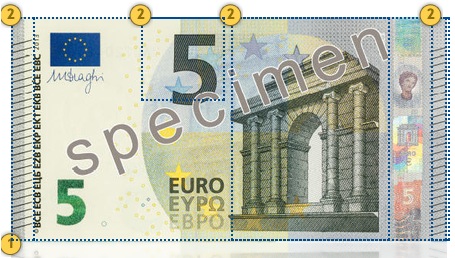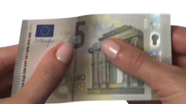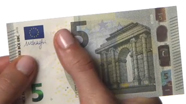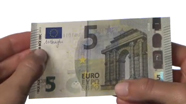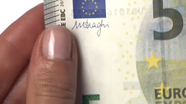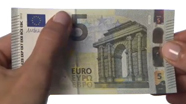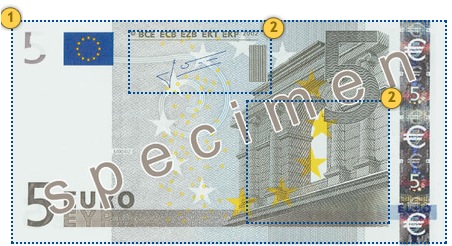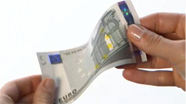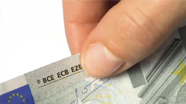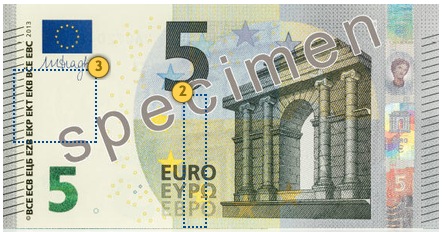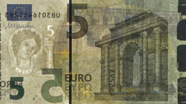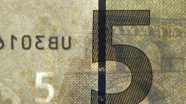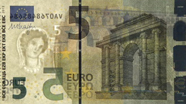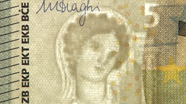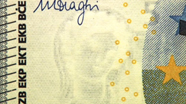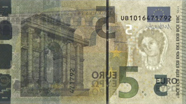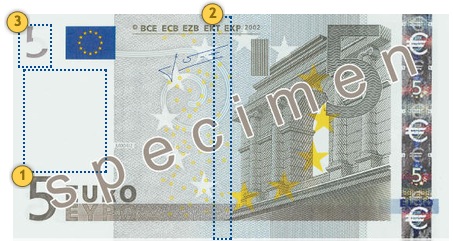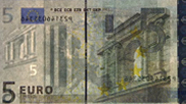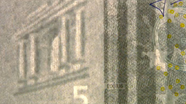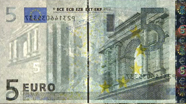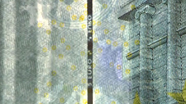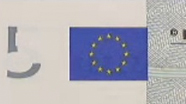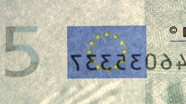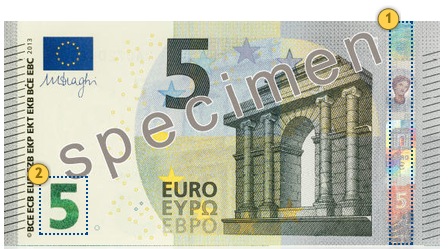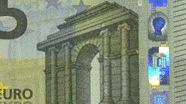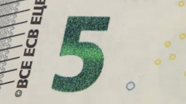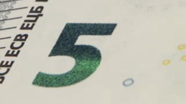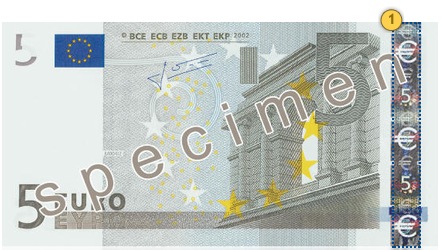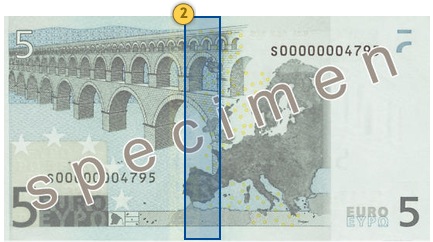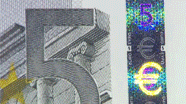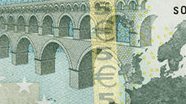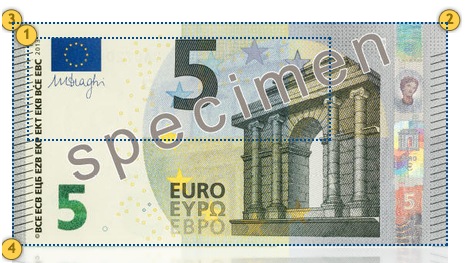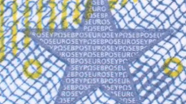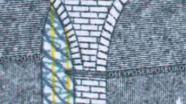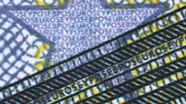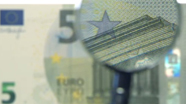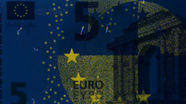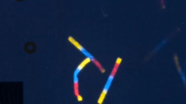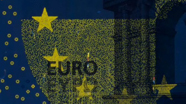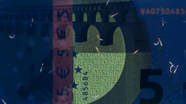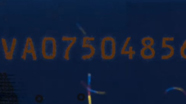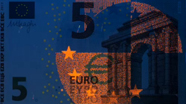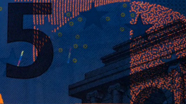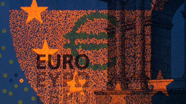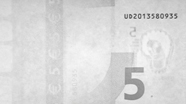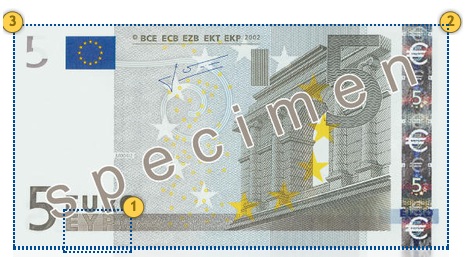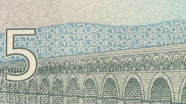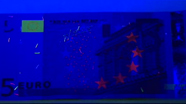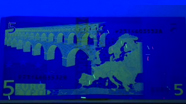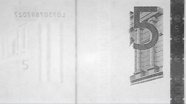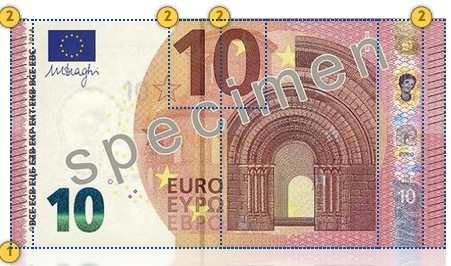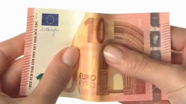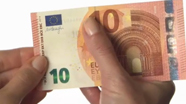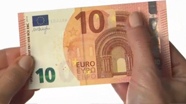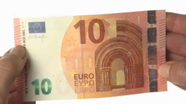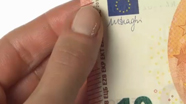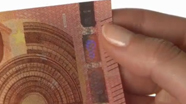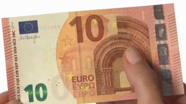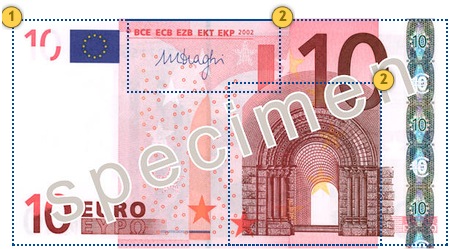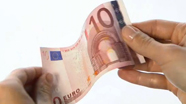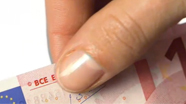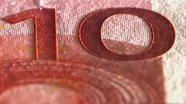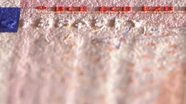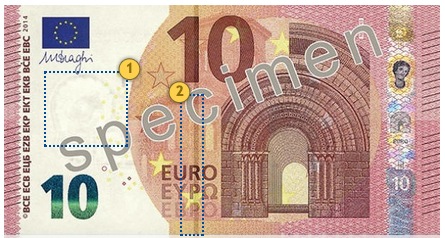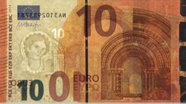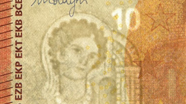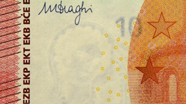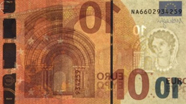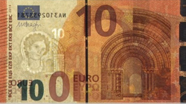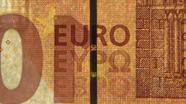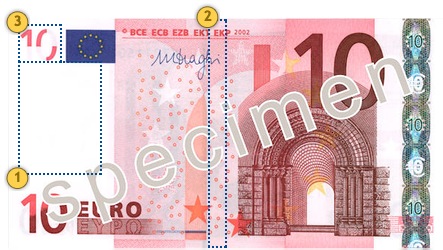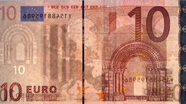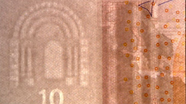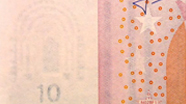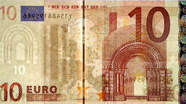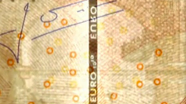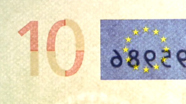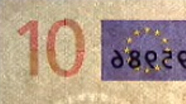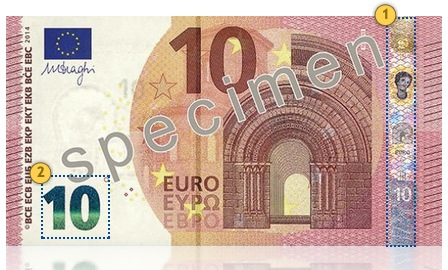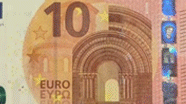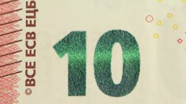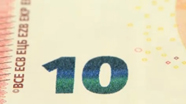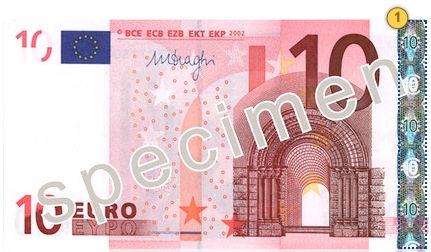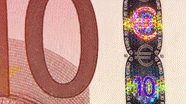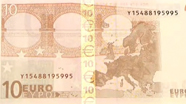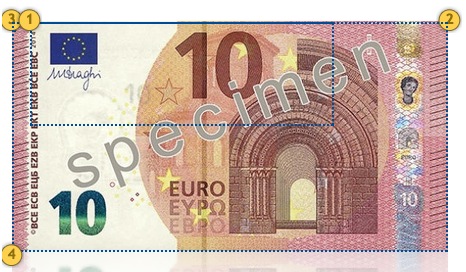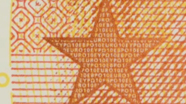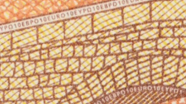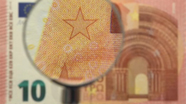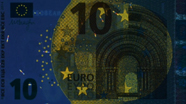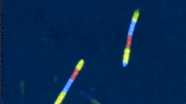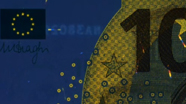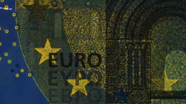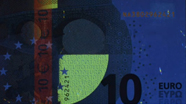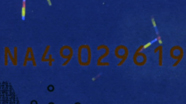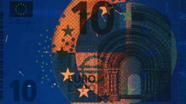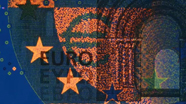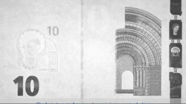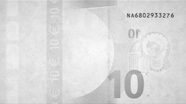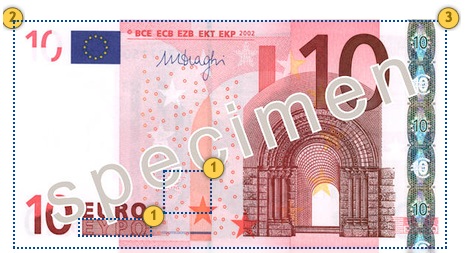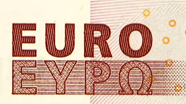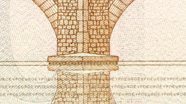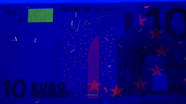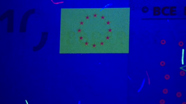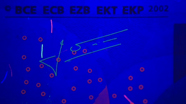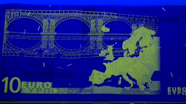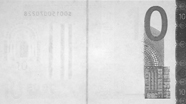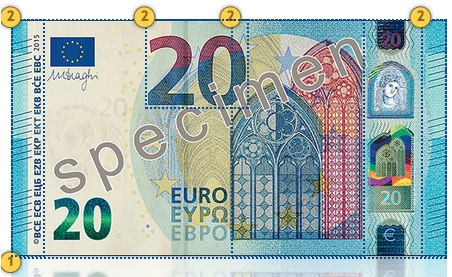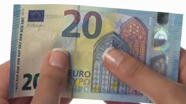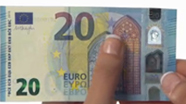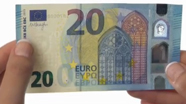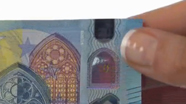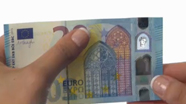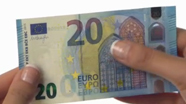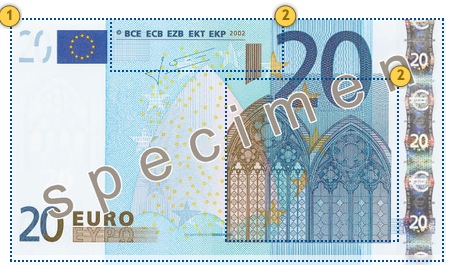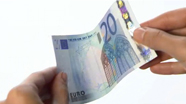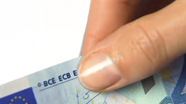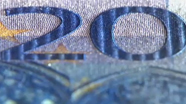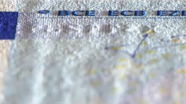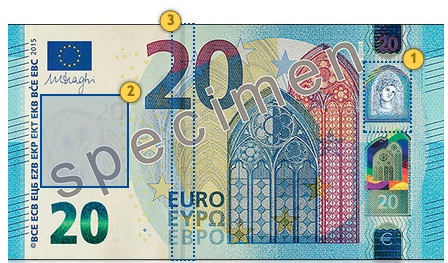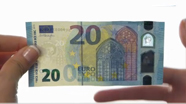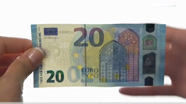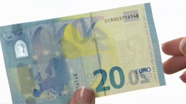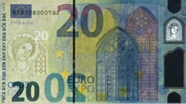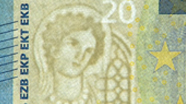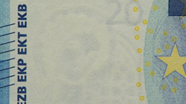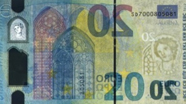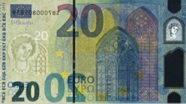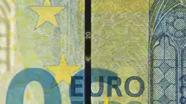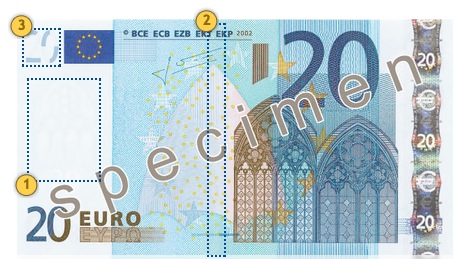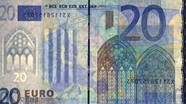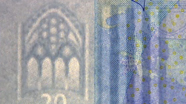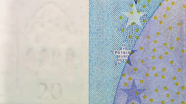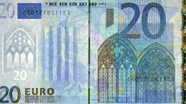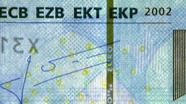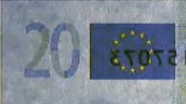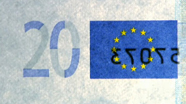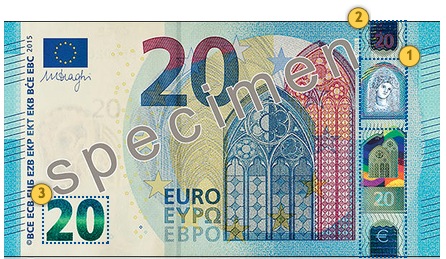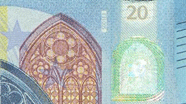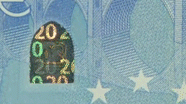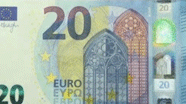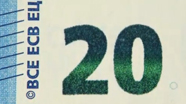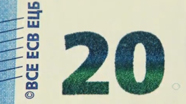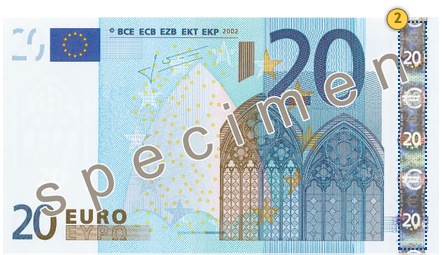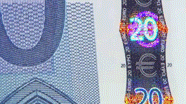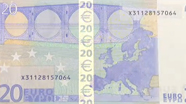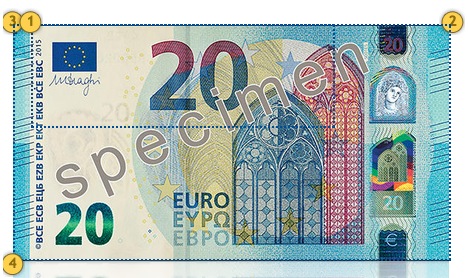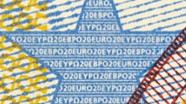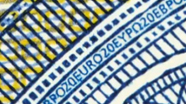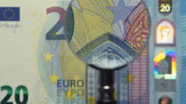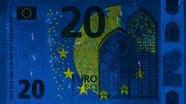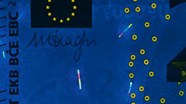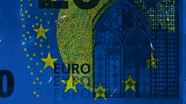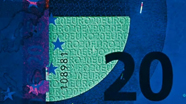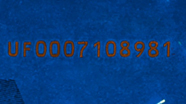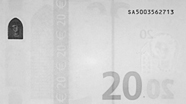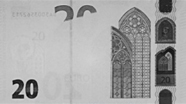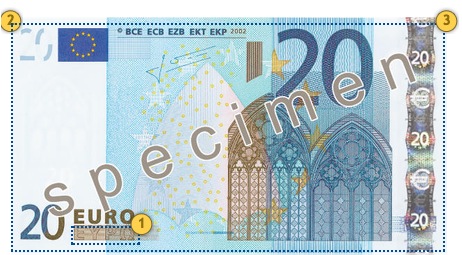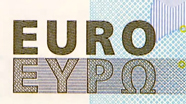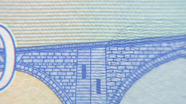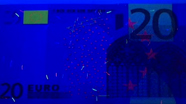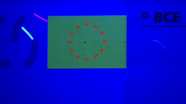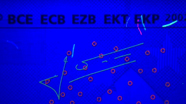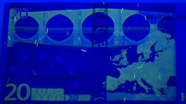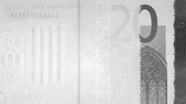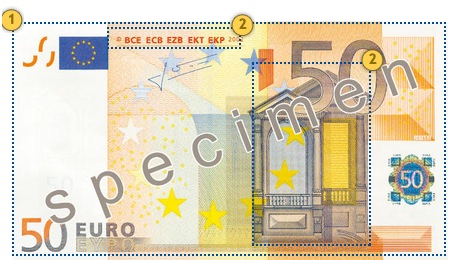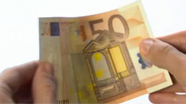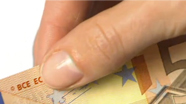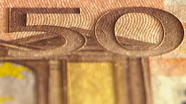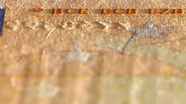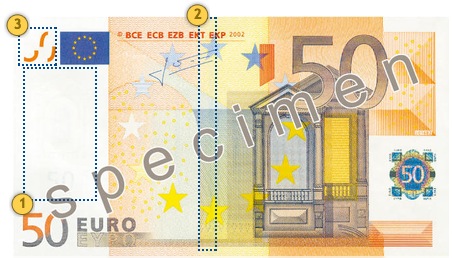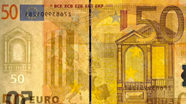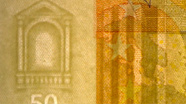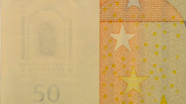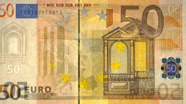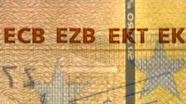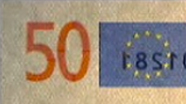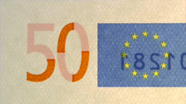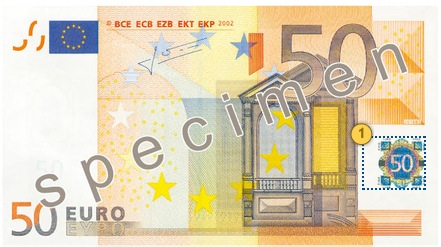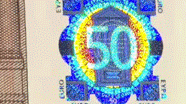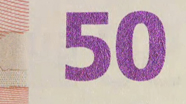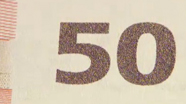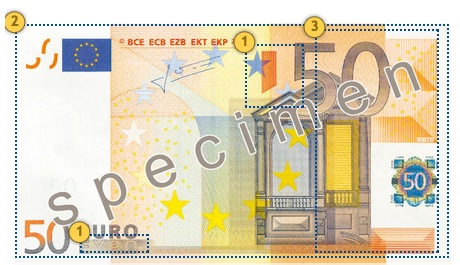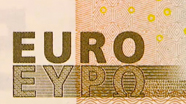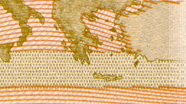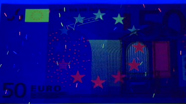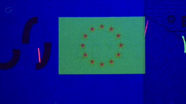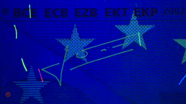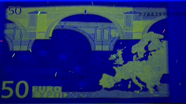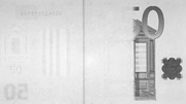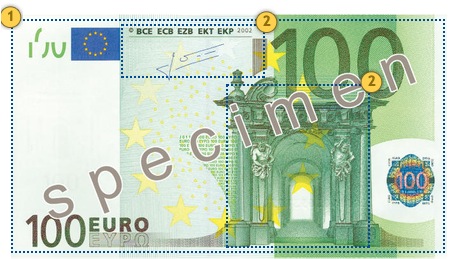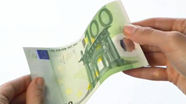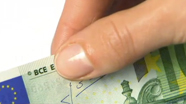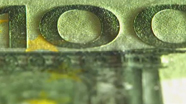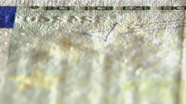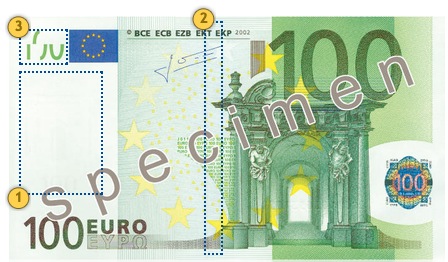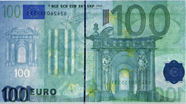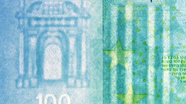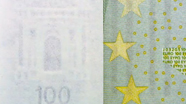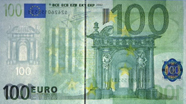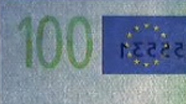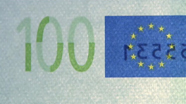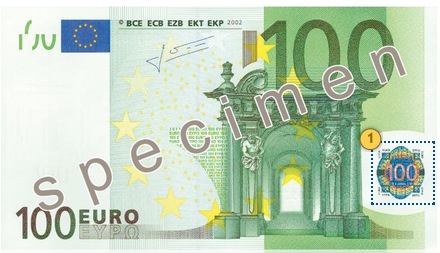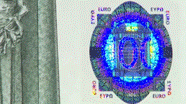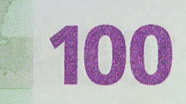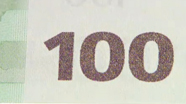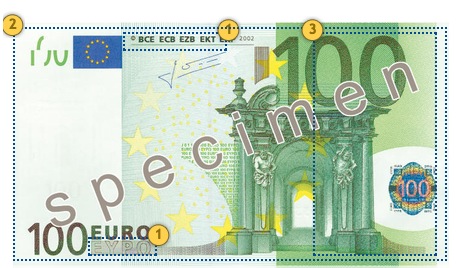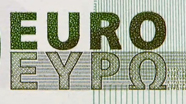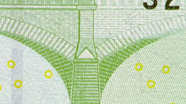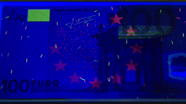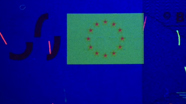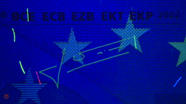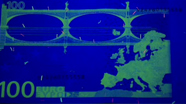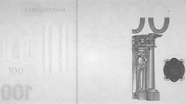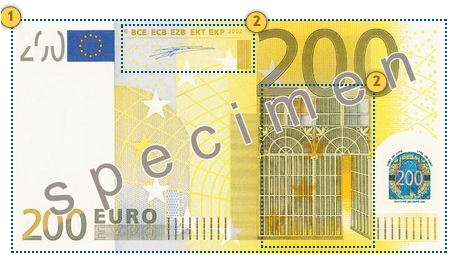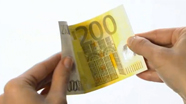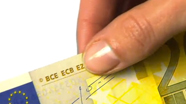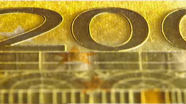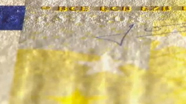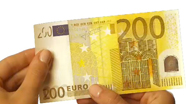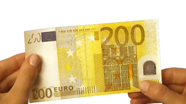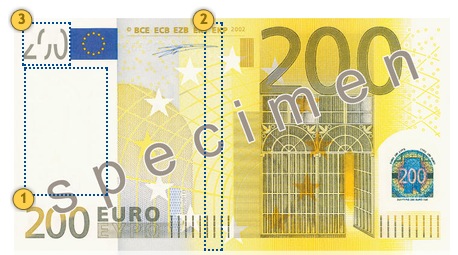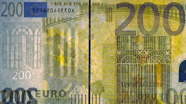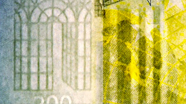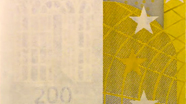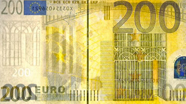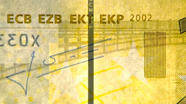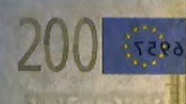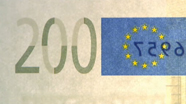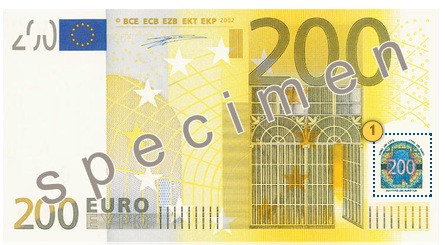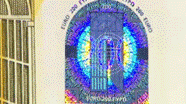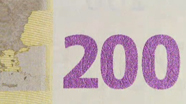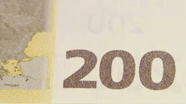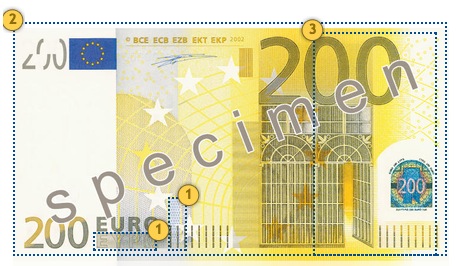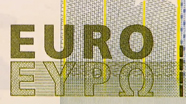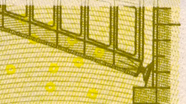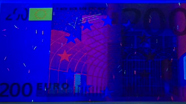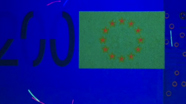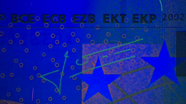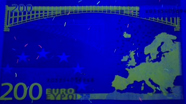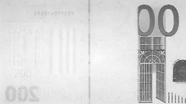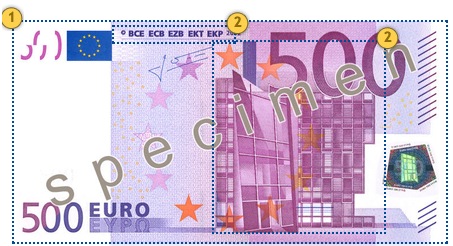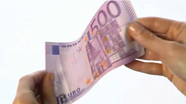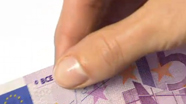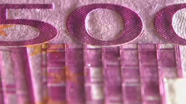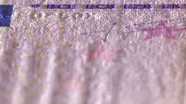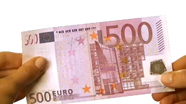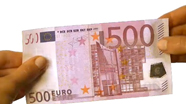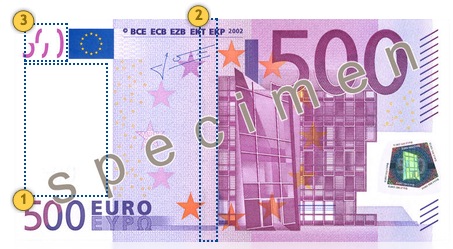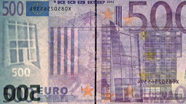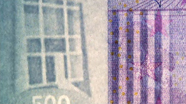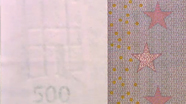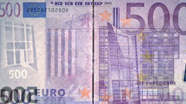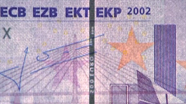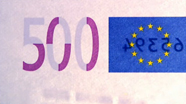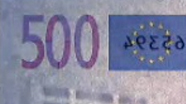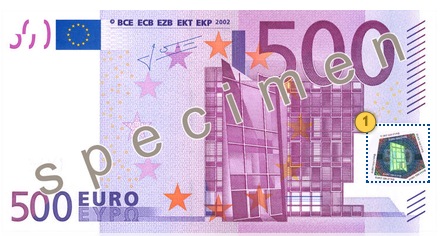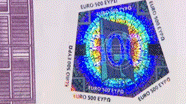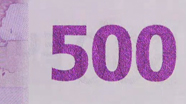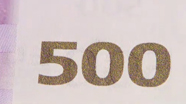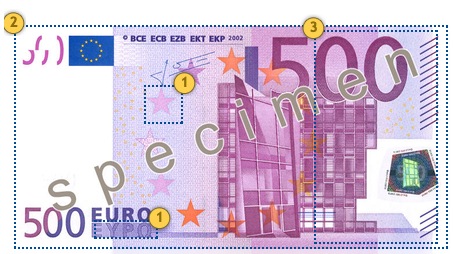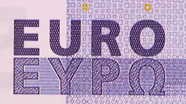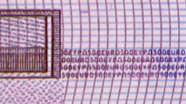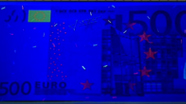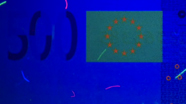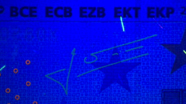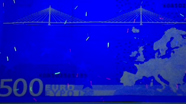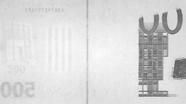Euro security features
Euro banknotes has 7 different banknotes in different values and sizes: 5, 10, 20, 50, 100, 200 and 500 eur. All those banknotes are the legal currency in whole Euro zone. Each banknote has different paintings and architectural style on it, but almost the same hidden security principles.
All euro banknotes series has windows and gates symbols on front side, which shows wide and cooperation spirit of Europe. On the back side of banknotes you will see bridges, which means cooperation between Europe and the rest of the world. All those windows, gates and bridges which shown on the banknotes are entirely stylised illustrations of the relevant architectural styles are not real.
On each euro note you will meet the signature of either Willem F. Duisenberg, Jean-Claude Trichet or Mario Draghi - first, second and third Presidents of the European Central bank. All notes with these signatures are still valid.

signature

signature

signature
All euro banknotes: 5, 10, 20, 50, 100, 200, 500 security features in detail
- 5 euro banknote
- 10 euro banknote
- 20 euro banknote
- 50 euro banknote
- 100 euro banknote
- 200 euro banknote
- 500 euro banknote
5 euro banknote security features. Recognize your 5 euro banknote is not fake, spot a fake banknote
Euro banknotes has lots of various security features. Those features will let you recognize real and fake banknote.
5 euro note size: 120 x 62 mm
5 euro architectural style: classic
Feel.
Special printing processes give banknotes their unique feel.
|
New 5 euro banknote. Europa Series €5 banknote. |
1) Unique banknote paper. . Feel the banknote, it is crisp and firm. 2) You can feel banknote zones by touching it.. Feel the banknote. On the front, there is a series of short raised lines on the left and right edges. They make it easy to identify the banknote, especially for visually impaired people. The main image, the lettering and the large value numeral also feel thicker. |
|
The first series €5 banknote. |
1) Banknote paper is unique. Special printing processes give the banknotes their unique feel. Feel the banknote. It should be crisp and firm. 2) Run your finger across the front of the banknote. The ink is thicker in some parts. |
Look.
Look at the banknote against the light. The portrait watermark and security thread become visible.
|
Europa Series €5 banknote. |
2) Security thread. Look at the banknote against the light. The security thread appears as a dark stripe. The € symbol and the value of the banknote can be seen in tiny white lettering in that stripe. 3) Portrait watermark. Look at the banknote against the light. The portrait watermark and security thread become visible. In alpha view you'll see Europe portrait (greek queen). |
|
The first series €5 banknote. |
1) Watermark. Look at the banknote against the light. A faint image and the value become visible. If, however, you put the banknote on a dark surface, the watermark becomes darker. 2) Security thread. Look at the banknote against the light. The security thread – a dark line running through the banknote – becomes visible. The word “EURO” and the value can be seen in tiny letters in the thread. 3) See-through number. Look at the banknote against the light. The marks printed in the top-left corner on the front and the top-right corner on the back of the banknote combine perfectly to form the value. |
Tilt.
Europa Series €5 banknote
|
Europa Series €5 banknote |
1) Portrait hologram. Tilt the banknote. The hologram – the silvery stripe on the right of the note – reveals a portrait of Europa (a figure from Greek mythology) as well as the € symbol, a window and the value of the banknote. 2) Emerald number. Tilt the banknote. The shiny number in the bottom left corner displays an effect of the light that moves up and down. The number also changes colour from emerald green to deep blue. |
|
The first series €5 banknote.. Tilt the banknote. On the front, you can see the shifting image on the hologram. The glossy stripe can be seen on the back.
|
1) Hologram. When you tilt the banknote, the hologram shows the value of the note and the € symbol. 2) Glossy stripe. Tilt the banknote. A gold-coloured stripe will appear on the back. It shows the value and the € symbol. |
Additional features.
Microprint, Standard UV light, Special UV light (UV-C), Infrared properties
|
Europa Series €5 banknote. |
1) Microprint. Some areas of the banknote feature a series of tiny letters. This microprint can be read with a magnifying glass. The letters are sharp, not blurred. 2) Standard UV light (front). 2) Standard UV light (back). 3) 3 Special UV light (UV-C). On the front, the small circles in the centre glow yellow, the large stars and several other areas glow orange. The € symbol also becomes visible. 4) Infrared properties. Under infrared light, on the front of the banknote, only the emerald number, the right side of the main image and the silvery stripe are visible. On the back, only the value numeral and the horizontal serial number are visible. |
|
The first series €5 banknote |
1) Microprint. On some areas of the banknote, you can see tiny writing. This microprint appears as a thin line to the naked eye, but can be read with a magnifying glass. Despite its small size, the print is sharp, not blurred. 2) UV properties. Under ultraviolet light, the paper itself does not glow. Red, blue and green-coloured fibres embedded in the paper appear, the flag of the European Union looks green and the stars turn orange. The signature of the ECB’s President turns green. The large stars and small circles in the centre glow orange. On the back, the map, bridge and value appear in yellow. 3) Infrared properties. Under infrared light, only the right side of the main image and the silvery stripe are visible. |
10 euro security features. Recognize fake 10 euro banknotes, spot a fake 10 euro banknote.
10 euro banknote size: 127 x 67 mm
10 euro architectural style: Romanesque
Feel.
Special printing processes give banknotes their unique feel.
|
Europa Series €10 banknote. |
1) Unique paper. Feel the banknote. It is crisp and firm. 2) Raised print. Feel the banknote. On the front, there is a series of short raised lines on the left and right edges. They make it easy to identify the banknote, especially for visually impaired people. The main image, the lettering and the large value numeral also feel thicker. |
|
The first series €10 banknote. |
1) Unique paper. Feel the banknote. It should be crisp and firm. 2) Raised print. Run your finger across the front of the banknote. The ink is thicker in some parts. |
Look.
Look at the banknote against the light. The watermark, security thread and see-through number become visible.
|
Europa Series €10 banknote. |
1) Portrait watermark Look at the banknote against the light. A faint image becomes visible and shows a portrait of Europa (a figure from Greek mythology), the value of the banknote and a window. If, however, you put the banknote on a dark surface, the light areas become darker. The portrait also appears in the hologram. 2) Security thread. Look at the banknote against the light. The security thread appears as a dark line. The € symbol and the value of the banknote can be seen in tiny white lettering in that stripe. |
|
The first series €10 banknote |
1) Portrait watermark. Look at the banknote against the light. A faint image and the value become visible. If, however, you put the banknote on a dark surface, the watermark becomes darker. 2) Security thread. Look at the banknote against the light. The security thread – a dark line running through the banknote – becomes visible. The word “EURO” and the value can be seen in tiny letters in the thread. 3) See-through number. Look at the banknote against the light. The marks printed in the top left corner on the front and the top right corner on the back of the banknote combine perfectly to form the value. |
Tilt.
Tilt the banknote. The silvery stripe reveals a portrait of Europa and the emerald number displays an effect of the light that moves up and down.
|
Europa Series €10 banknote. |
1) Portrait hologram. Tilt the banknote. The hologram – the silvery stripe on the right of the note – reveals a portrait of Europa (a figure from Greek mythology) as well as the € symbol, a window and the value of the banknote. 2) Emerald number. Tilt the banknote. The shiny number in the bottom left corner displays an effect of the light that moves up and down. The number also changes colour from emerald green to deep blue.
|
|
The first series €10 banknote. |
1) Hologram. When you tilt the banknote, the hologram shows the value of the note and the € symbol. 2) Glossy stripe. Tilt the banknote. A gold-coloured stripe will appear on the back. It shows the value and the € symbol.
|
Additional 10 euro security features.
Microprint, Standard UV light, Special UV light (UV-C), Infrared properties.
|
Europa Series €10 banknote. |
1) Microprint. Some areas of the banknote feature a series of tiny letters. This microprint can be read with a magnifying glass. The letters are sharp, not blurred. 2) Standard UV light (front). 3) Special UV light (UV-C). On the front, the small circles in the centre glow yellow, the large stars and several other areas glow orange. The € symbol also becomes visible. 4) Infrared properties |
|
The first series €10 banknote. |
1) Microprint. On some areas of the banknote, you can see tiny writing. This microprint appears as a thin line to the naked eye, but can be read with a magnifying glass. Despite its small size, the print is sharp, not blurred. 2) UV properties. Under ultraviolet light, the paper itself does not glow. Red, blue and green-coloured fibres embedded in the paper appear, the flag of the European Union looks green and the stars turn orange. The signature of the ECB’s President turns green. The large stars and small circles in the centre glow orange. On the back, the map, bridge and value appear in yellow. 3) Infrared properties. Under infrared light, only the right side of the main image and the silvery stripe are visible. |
About euro exchange rate
Euro is the second most popular currency in the world. It has many different banknotes, but the value of euro is different if you look against other currencies. Most popular exchange rates people are following are: euro to dollar, euro to pound, euro to yen, euro to ruble, euro to zloty, euro to rand, etc. Also, we provide versatile currency converter, which lets to calculate all different currencies among each other.
20 euro banknote security features. Recognize fake and real 20 euro banknotes, spot a fake banknote
20 euro banknote size: 127 x 67 mm
20 euro architectural style: Romanesque
Feel.
Special printing processes give banknotes their unique feel.
|
Europa Series €20 banknote. |
1) Unique paper. Feel the banknote. It is crisp and firm. 2) Raised print. Feel the banknote. On the front, there is a series of short raised lines on the left and right edges. They make it easy to identify the banknote, especially for visually impaired people. The main image, the lettering and the large value numeral also feel thicker. |
|
The first series €20 banknote. |
1) Unique paper. Feel the banknote. It should be crisp and firm. 2) Raised print. Run your finger across the front of the banknote. The ink is thicker in some parts. |
Look.
Look at the banknote against the light. The portrait window and watermark as well as the security thread become visible.
|
Europa Series €20 banknote. |
1) Portrait window. Look at the banknote against the light – the window near the top of the hologram becomes transparent and reveals a portrait of Europa on both sides of the note. When the banknote is tilted, the window also shows rainbow-coloured lines around the value numeral. On the back of the banknote, rainbow-coloured value numerals appear in the window. 2) Portrait watermark Look at the banknote against the light. A faint image becomes visible and shows a portrait of Europa (a figure from Greek mythology), the value of the banknote and the main image. If, however, you put the banknote on a dark surface, the light areas become darker. The portrait also appears in the hologram. 3) Security thread. Look at the banknote against the light. The security thread appears as a dark line. The € symbol and the value of the banknote can be seen in tiny white lettering in that stripe. |
|
The first series €20 banknote. |
1) Watermark. Look at the banknote against the light. A faint image and the value become visible. If, however, you put the banknote on a dark surface, the watermark becomes darker. 2) Security thread. Look at the banknote against the light. The security thread – a dark line running through the banknote – becomes visible. The word “EURO” and the value can be seen in tiny letters in the thread. 3) See-through number. Look at the banknote against the light. The marks printed in the top left corner on the front and the top right corner on the back of the banknote combine perfectly to form the value. |
Tilt.
Tilt the banknote. The silvery stripe reveals a portrait of Europa in a transparent window and the emerald number displays an effect of the light that moves up and down.
|
Europa Series €20 banknote. |
1) Portrait window. Look at the banknote against the light – the window near the top of the hologram becomes transparent and reveals a portrait of Europa on both sides of the note. When the banknote is tilted, the window also shows rainbow-coloured lines around the value numeral. On the back of the banknote, rainbow-coloured value numerals appear in the window. 2) Portrait hologram. Tilt the banknote. The hologram – the silvery stripe on the right of the note – reveals a portrait of Europa (a figure from Greek mythology) as well as the € symbol, the main image and the value of the banknote. 2) Emerald number. Tilt the banknote. The shiny number in the bottom left corner displays an effect of the light that moves up and down. The number also changes colour from emerald green to deep blue. |
|
The first series €20 banknote. |
1) Hologram. When you tilt the banknote, the hologram shows the value of the note and the € symbol. 2) Glossy stripe. Tilt the banknote. A gold-coloured stripe will appear on the back. It shows the value and the € symbol. |
Additional 20 euro security features.
Microprint, Standard UV light, Special UV light (UV-C), Infrared properties.
|
Europa Series €20 banknote. |
1) Microprint. Some areas of the banknote feature a series of tiny letters. This microprint can be read with a magnifying glass. The letters are sharp, not blurred. 2) Standard UV light (front). 2) Standard UV light (back). 3) Infrared properties. Under infrared light, on the front of the banknote, only the emerald number, the right side of the main image and the silvery stripe are visible. On the back, only the value numeral and the horizontal serial number are visible. |
|
The first series €20 banknote. |
1) Microprint. On some areas of the banknote, you can see tiny writing. This microprint appears as a thin line to the naked eye, but can be read with a magnifying glass. Despite its small size, the print is sharp, not blurred. 2) UV properties. Under ultraviolet light, the paper itself does not glow. Red, blue and green-coloured fibres embedded in the paper appear, the flag of the European Union looks green and the stars turn orange. The signature of the ECB’s President turns green. The large stars and small circles in the centre glow orange. On the back, the map, bridge and value appear in yellow. 3) Infrared properties.. Under infrared light, only the right side of the main image and the silvery stripe are visible. |
EUR exchange rates
50 euro banknote security features. Recognize real or fake 50 euro banknote, spot a fake 50 euro banknote.
50 euro banknote size: 127 x 67 mm
50 euro architectural style: Romanesque
Feel.
Special printing processes give banknotes their unique feel.
|
|
1) Unique paper. Feel the banknote. It should be crisp and firm. 2) Raised print. Run your finger across the front of the banknote. The ink is thicker in some parts. |
Look.
Look at the banknote against the light. The watermark, security thread and see-through number become visible.
|
|
1) Watermark. Look at the banknote against the light. A faint image and the value become visible. If, however, you put the banknote on a dark surface, the watermark becomes darker. 2) Security thread. Look at the banknote against the light. The security thread – a dark line running through the banknote – becomes visible. The word “EURO” and the value can be seen in tiny letters in the thread. 3) See-through number. Look at the banknote against the light. The marks printed in the top left corner on the front and the top right corner on the back of the banknote combine perfectly to form the value. |
Tilt.
Tilt the banknote. On the front, you can see the shifting image on the hologram. The colour-changing number can be seen on the back.
|
|
1) Hologram. When you tilt the banknote, the hologram shows the value of the note and a window or doorway. 2) Colour-changing number. Tilt the banknote. On the back, the number changes colour from purple to olive green or brown. |
Additional 50 eur security features.
Microprint, UV properties, Infrared properties.
|
|
1) Microprint. On some areas of the banknote you can see tiny writing. This microprint appears as a thin line to the naked eye, but can be read with a magnifying glass. Despite its small size, the print is sharp, not blurred. 2) UV properties. Under ultraviolet light, the paper itself does not glow. Red, blue and green-coloured fibres embedded in the paper appear, the flag of the European Union looks green and the stars turn orange. The signature of the ECB’s President turns green. The large stars and small circles in the centre glow orange. On the back, the map, bridge and value appear in yellow. 3) Infrared properties. When you look at the front of the banknote with an infrared device, only the right side of the main image remains visible. |
EUR exchange rates
100 eur banknote security features. Recognize real and fake banknotes. Spot a fake 100 eur banknote.
100 eur banknote size: 127 x 67 mm
100 eur architectural style: Romanesque
Feel.
Special printing processes give banknotes their unique feel.
|
|
1) Unique paper. Feel the banknote. It should be crisp and firm. 2) Raised print. Run your finger across the front of the banknote. The ink is thicker in some parts. |
Look.
Look at the banknote against the light. The watermark, security thread and see-through number become visible.
|
|
1) Watermark. Look at the banknote against the light. A faint image and the value become visible. If, however, you put the banknote on a dark surface, the watermark becomes darker. 2) Security thread. Look at the banknote against the light. The security thread – a dark line running through the banknote – becomes visible. The word “EURO” and the value can be seen in tiny letters in the thread. 3) See-through number. Look at the banknote against the light. The marks printed in the top left corner on the front and the top right corner on the back of the banknote combine perfectly to form the value. |
Tilt.
Tilt the banknote. On the front, you can see the shifting image on the hologram. The colour-changing number can be seen on the back.
|
|
1) Hologram. When you tilt the banknote, the hologram shows the value of the note and a window or doorway. 2) Colour-changing number. Tilt the banknote. On the back, the number changes colour from purple to olive green or brown. |
Additional 100 eur security features.
Microprint, UV properties, Infrared properties.
|
|
1) Microprint. On some areas of the banknote you can see tiny writing. This microprint appears as a thin line to the naked eye, but can be read with a magnifying glass. Despite its small size, the print is sharp, not blurred. 2) UV properties. Under ultraviolet light, the paper itself does not glow. Red, blue and green-coloured fibres embedded in the paper appear, the flag of the European Union looks green and the stars turn orange. The signature of the ECB’s President turns green. The large stars and small circles in the centre glow orange. On the back, the map, bridge and value appear in yellow. 3) Infrared properties. When you look at the front of the banknote with an infrared device, only the right side of the main image remains visible. |
200 eur banknote security features. Recognize real or fake 200 eur. Spot a fake 200 eur banknote.
200 eur banknote size: 127 x 67 mm
200 eur architectural style: Romanesque
Feel.
Special printing processes give banknotes their unique feel.
|
|
1) Unique paper. Feel the banknote. It should be crisp and firm. 2) Raised print. Run your finger across the front of the banknote. The ink is thicker in some parts. |
Look.
Look at the banknote against the light. The watermark, security thread and see-through number become visible.
|
|
1) Watermark. Look at the banknote against the light. A faint image and the value become visible. If, however, you put the banknote on a dark surface, the watermark becomes darker. 2) Security thread. Look at the banknote against the light. The security thread – a dark line running through the banknote – becomes visible. The word “EURO” and the value can be seen in tiny letters in the thread. 3) See-through number. Look at the banknote against the light. The marks printed in the top-left corner on the front and the top-right corner on the back of the banknote combine perfectly to form the value. |
Tilt.
Tilt the banknote. On the front, you can see the shifting image on the hologram. The colour-changing number can be seen on the back.
|
|
1) Hologram. When you tilt the banknote, the hologram shows the value of the note and a window or doorway. 2) Colour-changing number. Tilt the banknote. On the back, the number changes colour from purple to olive green or brown. |
Additional 200 eur security features.
Microprint, UV properties, Infrared properties.
|
|
1) Microprint. On some areas of the banknote you can see tiny writing. This microprint appears as a thin line to the naked eye, but can be read with a magnifying glass. Despite its small size, the print is sharp, not blurred. 2) UV properties. Under ultraviolet light, the paper itself does not glow. Red, blue and green-coloured fibres embedded in the paper appear, the flag of the European Union looks green and the stars turn orange. The signature of the ECB’s President turns green. The large stars and small circles in the centre glow orange. On the back, the map, bridge and value appear in yellow. 3) Infrared properties. When you look at the front of the banknote with an infrared device, only the right side of the main image remains visible. |
500 eur banknote security features. Recognize real and fake 500 eur banknotes. Spot a fake 500 eur
500 eur banknote size: 127 x 67 mm
500 eur architectural style: Romanesque
Feel.
Special printing processes give banknotes their unique feel.
|
|
1) Unique paper. Feel the banknote. It should be crisp and firm. 2) Raised print. Run your finger across the front of the banknote. The ink is thicker in some parts. |
Look.
Look at the banknote against the light. The watermark, security thread and see-through number become visible.
|
|
1) Watermark. Look at the banknote against the light. A faint image and the value become visible. If, however, you put the banknote on a dark surface, the watermark becomes darker. 2) Security thread. Look at the banknote against the light. The security thread – a dark line running through the banknote – becomes visible. The word “EURO” and the value can be seen in tiny letters in the thread. 3) See-through number. Look at the banknote against the light. The marks printed in the top-left corner on the front and the top-right corner on the back of the banknote combine perfectly to form the value. |
Tilt.
Tilt the banknote. On the front, you can see the shifting image on the hologram. The colour-changing number can be seen on the back.
|
|
1) Hologram. When you tilt the banknote, the hologram shows the value of the note and a window or doorway. 2) Colour-changing number. Tilt the banknote. On the back, the number changes colour from purple to olive green or brown. |
Additional 500 eur security features.
Microprint, UV properties, Infrared properties.
|
|
1) Microprint. On some areas of the banknote you can see tiny writing. This microprint appears as a thin line to the naked eye, but can be read with a magnifying glass. Despite its small size, the print is sharp, not blurred. 2) UV properties. Under ultraviolet light, the paper itself does not glow. Red, blue and green-coloured fibres embedded in the paper appear, the flag of the European Union looks green and the stars turn orange. The signature of the ECB’s President turns green. The large stars and small circles in the centre glow orange. On the back, the map, bridge and value appear in yellow. 3) Infrared properties. When you look at the front of the banknote with an infrared device, only the right side of the main image remains visible. |
